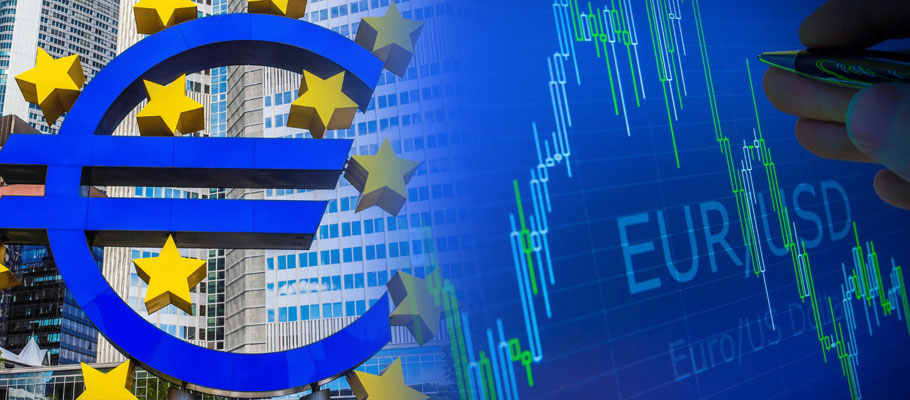
Published: July 23rd, 2025
On Tuesday the Euro to Dollar exchange rate ceased the strong uptrend it displayed last week. Analysts see a shallow pullback in the pair unfolding over the coming days.
In a strategy note published Tuesday, FX Strategists at Société Générale said that if support holds above 1.16, the uptrend could restart, putting 1.18 back into focus.
‘We see the pair heading towards 1.20 later this year, potentially reaching a peak of 1.25 by the end of Q4. That would be consistent with 2019 and 2020 highs, though we doubt 1.30 will be in-sight for some time yet.’
While there are no major economic prints scheduled out of the US this week, both the EU and Japan face a deadline from Washington to reach agreement on new trade deals with the US.
Trade agreements and their assumed stability tend to be supportive of the Dollar, reducing potential for negative growth shocks triggered by tariffs.
In a separate note, currency strategists at Commonwealth Bank said the White House is reportedly seeking a universal tariff of 10 percent on all but a handful of EU goods.
‘If Brussels retaliates, the escalation could lift EUR/USD up if investors adopt a “sell America” narrative and the US suffers economic fallout as a result.’
At the beginning of June, the EUR/USD rate was firmly in bid, gaining three-quarters of a percentage to reach 1.1429, the highest point in more than 30 days.
The pair regained the front foot as analysts pegged it for additional upside, pushed on by a narrative of fundamentals shaped by rising global trade conflicts.
American President Donald Trump was agitating for additional punitive tariffs against China after agreeing an initial China-US trade agreement in early May. The administration accused Beijing of breaching that initial accord. When markets closed on the last Friday in May, he raised tariffs on Chinese exports of steel and aluminium.
In a market analysis published on June 3rd, Danske Bank's FX Strategy Unit wrote that ‘Tariff worries are on the rise again following a Friday evening intervention by the White House that doubles levies on Chinese steel and aluminium from June 8th. EUR/USD has moved above 1.1348 as a result, while US bond yields also inch higher. Stock futures, meanwhile, have sunk into red.’
In recent months a rising Euro has become a predictable reaction to intensifying trade tensions, Danske's analysts added. Regular reminders that Trump favors tariffs as a negotiating tactic and wants to level out the US balance of trade globally, should put sails in EUR's 2025 YTD uptrend for the next few weeks. ‘We would not be surprised if EUR/USD achieved new highs on the trend.’
At the end of December 2024, the Euro-Dollar rate came under pressure as a brief pre-Christmas recovery failed to extend into the yuletide break. Analysts said recent comments in the financial press by European Central Bank (ECB) President Christine Lagarde were the likely source of cooling demand for the single currency.
Lagarde told Bloomberg on 20th December that she was optimistic Frankfurt was on course to hit its two percent inflation target. The ECB, Lagarde said, was ‘approaching the point where we have brought down inflation to our medium-term goal of two per cent.’
An analysis by Bank of New York (BNY) said Lagarde's comments support the view that falling inflation will free the ECB's hand to out-cut other G10 central banks in the coming months, almost guaranteeing that EUR will stay under pressure, especially against the Greenback.
The week prior the US Federal Reserve signaled it wanted to cut interest rates only two times next year against a background of resurgent economic growth. Despite the upbeat sentiment, USD dipped on Friday after publication of under-expectation PCE inflation figures, which took the air out of the Dollar's upward ascent.
The core PCE measure indicated US inflation had risen by 0.1 per cent month-on-month in November, roughly half the 0.2 per cent consensus forecast. Year-on-year inflation remained stable at 2.8 per cent. Markets, however, were looking for an uptick to 2.9 per cent.
BNY analysts said this prompted some investor relief and a selloff in USD, which needed a steady supply of hawkish data to keep its rally going. Data prints that showed at- or below-consensus readings resulted in later pullbacks.
In October 2024, a note to investors from UK-based global investment bank Jefferies said a dip in the Euro to Dollar exchange rate below its 200-day moving average marked a significant deterioration in the pair's technical outlook.
The firm's forecast model relies on the 200-day displaced moving average (DMA), which positions the pair in a multi-week downtrend when below, and an uptrend when above.
‘The 200 day moving averages can be key long-term milestones where fiat currencies sometimes get caught and stay above or below their moving averages for extended periods.’
In mid-October the 200 DMA was located at 1.0872, with signals suggesting the technical level had become a ceiling, even as rebounds seen the previous week attempted to rise above it.
The remainder of the month saw EUR/USD wallowing below the 200 DMA though there were multiple retests of the seven-day level.
The single currency was under pressure as more and more traders concluded that the European Central Bank (ECB) would cut interest rates more deeply, and at a more aggressive pace, than the US Fed.
That sentiment had already impacted Eurozone bond yields negatively versus the US. In early October Frankfurt responded to Eurozone's softening inflation readings by reducing interest rates by another 25 basis points.
In November 2024, multiple ECB speakers, including bank President Christine Lagarde, started dropping hints about what the policy future would hold for EUR.